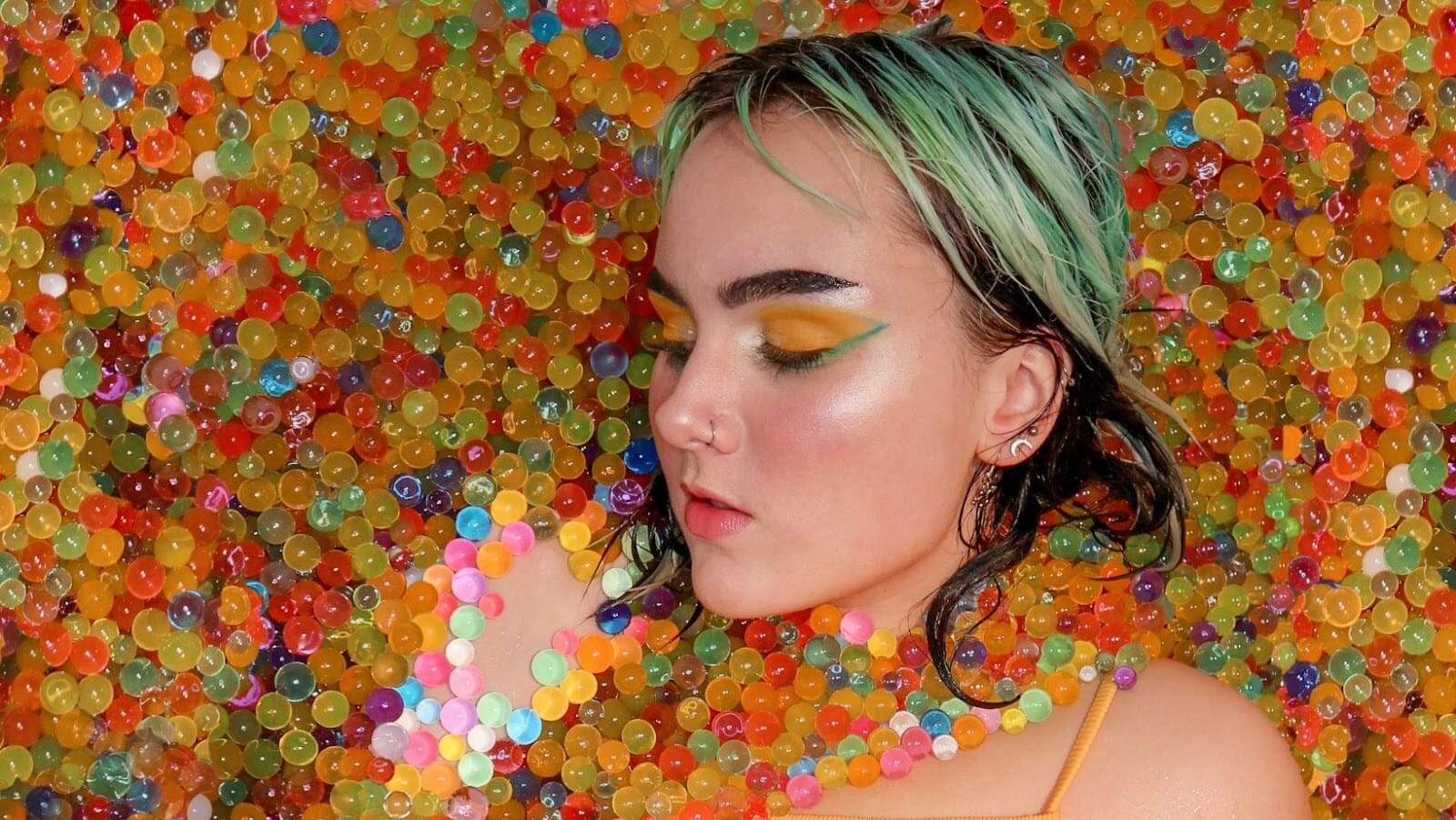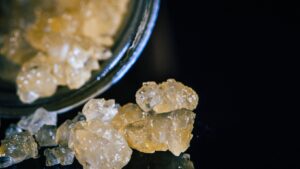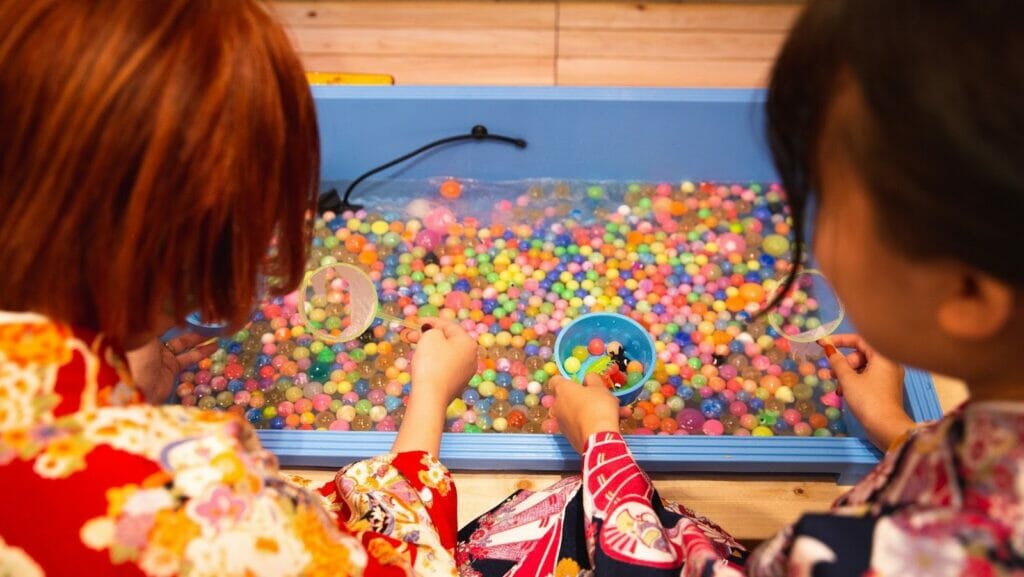
When Orbeez are left in water for too long, they can become slimy, discolored, and unpleasant to touch, indicating that they have begun to degrade. Orbeez are designed to absorb water and grow in size, but they are not meant to be left in water indefinitely.
Here are some things you need to keep in mind when using water beads:
Number Tip
1. Over-soaking Orbeez can cause them to split or burst, making them unusable.
2. If your Orbeez are becoming slimy, it’s time to dispose of them and start fresh with a new batch.
3. Always follow the instructions provided with your Orbeez to avoid damaging them.
Water beads are a fun and versatile sensory play material for kids and adults alike, but they must be handled with care to ensure their longevity.
What are water beads?
Water beads are a polymer that can absorb hundreds of times its weight in water. They begin as tiny, hard beads, and when placed in water, they swell up and become squishy and colorful. Water beads are a popular sensory toy among kids and adults because of their unique texture and vibrant colors.
This article will discuss water beads and what happens if you leave them in water too long.
Introduction to Water Beads
Water beads or Orbeez are tiny, water-absorbent polymer beads that expand when soaked in water, creating colorful and squishy, fun and functional spheres.
Water beads are commonly used in floral arrangements, centerpieces, and decorations. However, they are also used for sensory play by children and adults alike.
If left in water for too long, water beads can become oversaturated and burst, losing their texture and color. Therefore, it is important to follow the packaging instructions and properly dispose of water beads after use.
Different types of Water Beads
Water beads are a popular sensory toy used for various decorative purposes. There are different types of water beads, each with unique characteristics and uses.
Orbeez: These water beads are small, round, and come in various colors. They are perfect for sensory play and can decorate vases or flower arrangements.
Crystal water beads: These clear and round water-absorbent beads can grow up to 200 times their original size when soaked in water. As a result, they can be used for vase fillers, plant decor, and sensory bins for kids.
Soil Moisture Beads: These are small, cylindrical water-absorbing beads that are commonly used in gardening. They are mixed with soil to help retain moisture and nutrients and can improve the health and growth of plants.
Water pearls: These small, colorful water-absorbent beads can grow up to 100 times their original size. They are used for decorating vases, centerpieces, and floral arrangements.
Marble-sized water beads: These water beads come in various colors and sizes and are mostly used for sensory play and decoration. Over soaking of these beads in water can cause them to burst and be dangerous if swallowed by children or pets. Ensure proper care while using them.
How do they work?
Water beads are a popular sensory toy made of superabsorbent polymer that can absorb and hold their weight in water many times. When added to water, these tiny beads absorb the liquid and swell to large, squishy spheres.
Here’s how they work: These small beads or Orbeez are made of a superabsorbent polymer material that can hold water up to 100 times their weight. When added to water, these tiny orbs absorb the water and increase in size, hydrated, and smooth.
The hydrated beads can be used for various purposes, from vase fillers to sensory play toys. However, if left in water for too long, the water beads can break down and begin to release their absorbed water, resulting in a sticky, slimy mess.
The benefit of using water beads is that they provide a unique tactile experience and a visually pleasing look to any decoration or play activity.
How Long Should Water Beads be Left in Water?
Water beads, or orbeez, are popular for use in floral arrangements and water play. They can last for years with the right care and maintain their original texture and color. However, leaving them in water too long could break down and become slimy or mushy.
In this article, we’ll look at how long water beads should be left in water, and some tips to help keep them looking their best.
Effects of leaving water beads in water for too long
Water beads are a fun addition to home decor or sensory play, but leaving them in water for too long can have negative effects.
Over time, water beads absorb water and increase in size. If left in water for too long, the beads can become oversaturated and burst, causing a mess and potential hazard.
Moreover, leaving water beads in water for extended periods can lead to the growth of bacteria, mold, and fungus, which can harm humans and animals.
To prevent such situations, changing the water and cleaning the beads every 3-4 weeks is recommended. It’s best to avoid leaving the water beads in water for extended periods, especially in warm and humid conditions that encourage bacterial growth.
What Happens If You Leave Orbeez in Water Too Long
Water beads are a fun sensory play item for kids and adults alike. However, it is important to know when to dispose of them to avoid mould and fungal growth. Leaving water beads in water for too long can lead to the growth of harmful bacteria and cause a foul smell in your home.
So, how long is too long? Water beads should be soaked for no more than 24 hours. After that, they should be drained and rinsed thoroughly with clean water. Leaving them in water for longer than 24 hours can cause them to lose shape and become slimy, making them unenjoyable to play with. If your water beads are starting to shrink, change their color, or smell bad, it is time to dispose of them and get a fresh batch.
Pro Tip: To extend the life of your water beads, store them in an airtight container when not in use.
Tips for dealing with water beads that have been left in water too long
Water beads are popular among gardeners and hobbyists alike. However, leaving them in water for too long can lead to problems. If you’ve accidentally left water beads in water for too long, use these tips to save them:
1. Drain the beads:
Drain any excess water from the container where the beads have been soaked for too long.
2. Add fresh water:
Rinse the beads with fresh water and drain them again.
3. Add Epson Salt:
Add 1/8 teaspoon of Epsom salt per cup of clean water and let the beads soak for a few hours.
Alternatively, if the beads have shrunk too much, rehydrate them by soaking them overnight in a bowl of clean water.
Remember that water beads should not be left in water for more than 48-72 hours to avoid any damage to the beads or mold growth.
Pro Tip: To avoid leaving water beads in water for too long, set a reminder or label the date they were soaked to ensure you remove them in time.
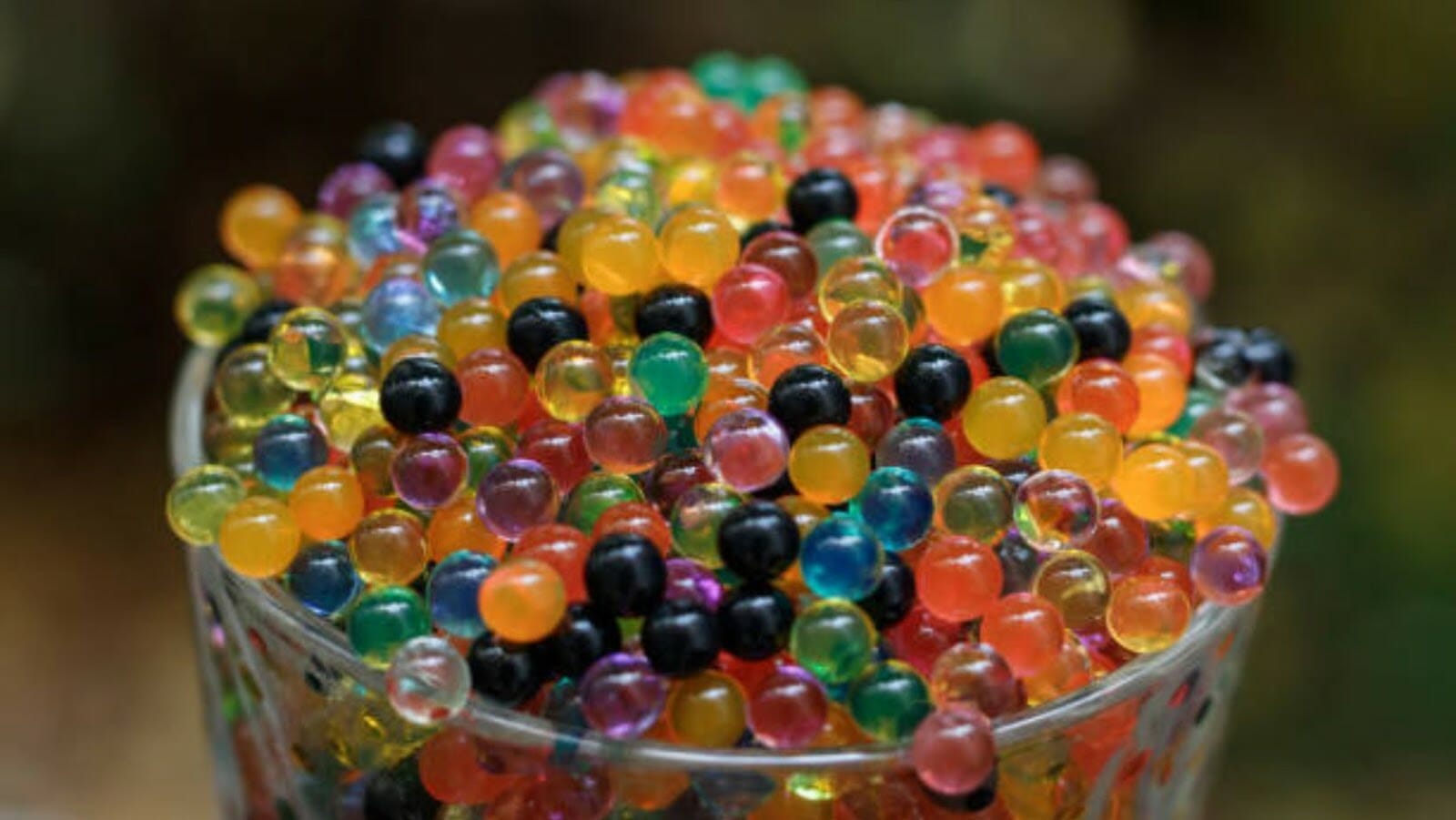
Water beads with plants
Water beads with plants is a great way to add water-saving capability to any indoor or outdoor space. The beads can provide desired moisture to plants without needing to manually water them. You can also use the beads for other purposes, like floral decorations and sensory play.
This article will explore how to incorporate water beads with plants and use them safely.
How water beads help with plant growth
Water beads, or hydrogel beads or Orbeez, absorb and retain water to create a moist environment for plant growth. As they absorb water, the beads expand and become gel-like. This process helps with plant growth in three main ways:
1. Water retention: The beads hold onto moisture, slowly releasing it over time to keep the surrounding soil moist, which is especially beneficial if you live in a dry climate.
2. Nutrient retention: The beads can also retain nutrients within their gel-like substance, providing a slow-release fertilizer to your plants.
3. Aeration: The beads create air channels within the soil, preventing soil compaction and allowing roots to breathe.
However, if the water beads are left in water for too long, they can become moldy or slimy and may harm your plants rather than help them. Therefore, it’s important to regularly check the soil’s moisture level and adjust as needed to ensure that the plants are getting the right amount of water.
Pro Tip: Soak the water beads in water for a few hours before adding them to your plants to ensure they are fully hydrated and ready to absorb water.
What happens if water beads are left in plant water too long?
Water beads are often used as a decorative element in vases, aqua gardens, and terrariums. However, leaving water beads in plant water for too long can harm the plants’ roots.
Over time, water beads can absorb all the water in the container, leading to dehydration of plants. Water beads can also create a high-humidity environment, encouraging mold and bacteria growth in the soil, potentially harming the plant roots. Additionally, when the beads shrink as they dry out, they become challenging to remove and can clog the drainage holes of the container, further impacting the plant’s health.
To prevent these issues from arising, it is recommended that water beads are replaced every four weeks to ensure plants are not affected negatively.
The benefits of using water beads with plants
Using water beads with plants can provide numerous benefits, not just for the aesthetic appeal but also for plant growth.
Water beads are polymer beads that absorb water and release it slowly, keeping the soil moist for longer. They are a great organic alternative to soil as they reduce the growth of fungus and bacteria in plants.
Here are some benefits of using water beads with plants:
Benefit Description
1) Water conservation: Water beads retain water for long durations and act as a perfect alternative to soil, minimizing the need for frequent watering.
2) Better plant growth: The moisture provided by the water beads can enhance the growth of roots and improve the overall growth of the plant.
3) Decorative: Adding water beads to your indoor plants sets a lovely aesthetic element to your decor.
Pro tip: Remember to not leave water beads in water for too long, as they can begin to smell and attract mold.

Creative uses for water beads
Water beads, also known as Orbeez, are becoming an increasingly popular craft supply. The vibrant colors and jelly-like texture of Orbeez make them a fun option to decorate and use in various creative projects. Water beads are also great for making centerpieces and other decorations sparkle.
This article will examine some of the many creative uses for water beads.
Decorative uses
Water beads are an amazing and versatile decorative material that can be used creatively. Here are some exciting uses for water beads that will add color and texture to your home or event decor.
Floral arrangements: Water beads can replace water in vase arrangements, adding a fun pop of color in various displays.
Spa treatments: Making foot and hand baths with water beads is a unique way to make a luxurious and refreshing spa experience.
Kids’ sensory play: Water beads can be used for sensory play with children. They provide a fun texture experience making them a great tool for imaginative play activities.
Home decor: Using water beads as filler in clear vases or bowls will add a vibrant look to your home decor.
However, be aware that leaving Orbeez in water for too long can cause them to grow slimy and potentially harmful mold. So, it’s best practice to refresh water every two to three weeks to keep them clean and bright.
Sensory play with water beads
Sensory play with water beads is a fun and engaging activity for children and adults. Water beads are small, absorbent polymer balls that swell up when they are soaked in water, creating a unique sensory experience.
Here are some creative uses for water beads in sensory play:
- Pour water beads into a sensory bin or small pool and let children use their hands to explore the different textures and colors.
- Freeze water beads in ice cubes for a cool and refreshing sensory experience.
- Add water beads to clear water in a water table or bathtub for a fun and colorful activity.
- Use water beads in art projects by gluing them onto paper or creating 3D sculptures and designs.
Pro Tip: To prolong the life of your water beads, store them in a sealed container when not in use and replace the water every few days to prevent bacteria growth.
DIY projects using water beads
Water beads have become popular for DIY projects due to their versatility and vibrant colors. Here are some creative ways to use water beads for your next project:
Water Bead Sensory Bin: Fill a bin with water beads and let children explore their sensory experience.
Floral Arrangements: Add a pop of color to your floral arrangements using water beads in the vase or as filler.
Home Decor: Use water beads in a clear vase or jar to create a unique, eye-catching home decor accent.
Stress Balls: Fill a balloon with water beads and tie the end to create a DIY stress ball.
Plant Watering: Use water beads in your plant pots to help retain moisture.
Pro Tip: Make sure to dispose of water beads properly, as they can be harmful if ingested by pets or children.
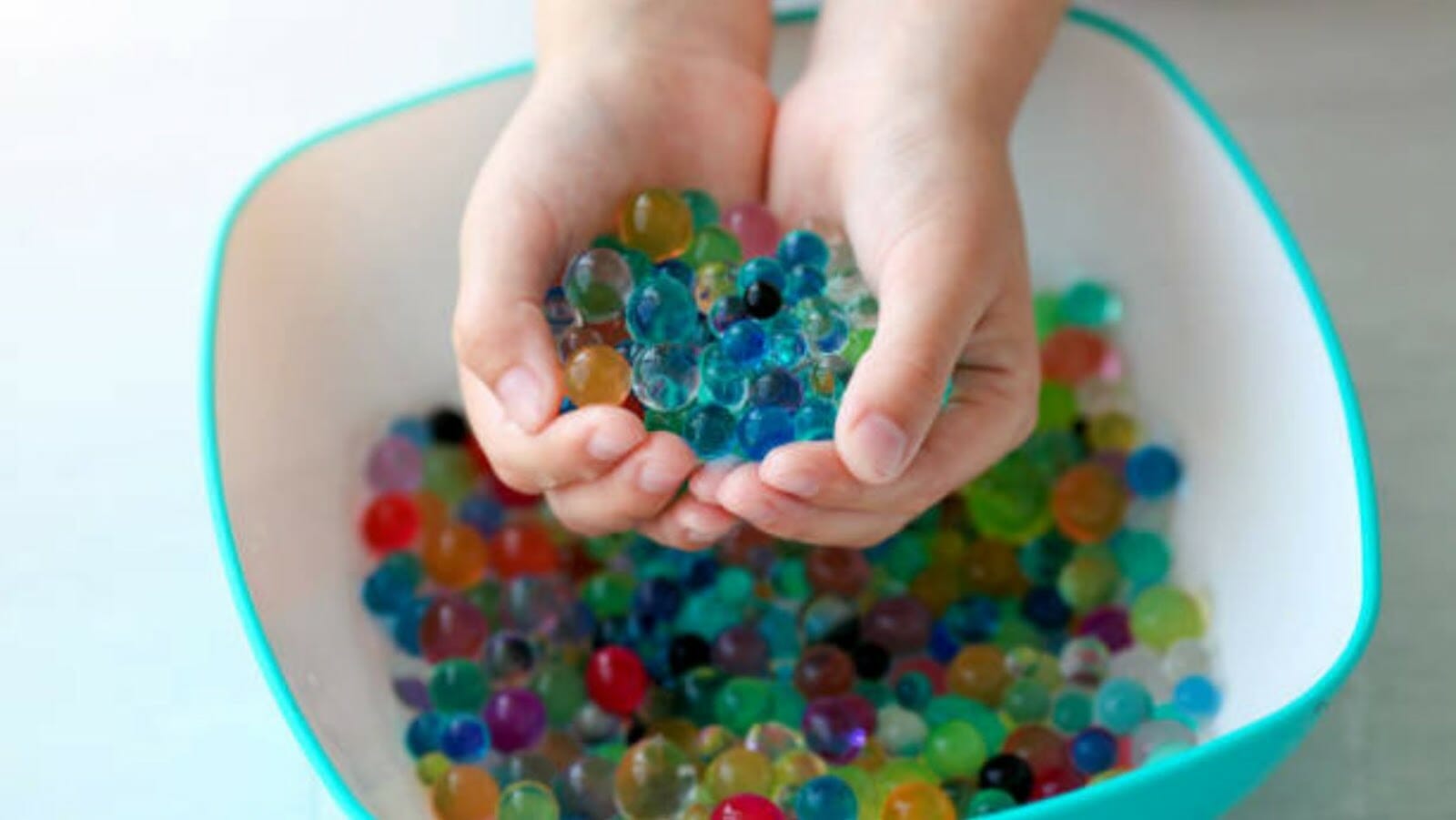
Safe handling and disposal of water beads
Water beads, also known as Orbeez, can be fun and colorful additions to any sensory play experience. However, it is important to know that they should be handled and disposed of carefully.
In this section, we will explore the safest ways to handle and dispose of water beads to avoid potential environmental or health hazards.
Handling water beads safely
Water beads are polymer balls that expand when soaked in water. They are often used for sensory play and decoration. The following tips will help you handle water beads safely and dispose of them properly:
Keep water beads out of reach of young children as they can be a choking hazard.
Do not dispose of dry water beads down the drain as they can clog pipes – instead, dispose of them in the garbage.
Do not leave water beads in water for an extended period, as they can break down and release harmful chemicals.
When disposing of water beads, allow them to dry out completely before throwing them away.
If you accidentally spill water beads, clean them immediately to prevent slipping and falling.
Pro tip: To prolong the life of your water beads, store them in an airtight container when not in use.
Disposing of water beads in an environmentally friendly way
Water beads are not biodegradable and can harm the environment if disposed of improperly. Here’s a guide to help you dispose of water beads in an eco-friendly way:
Step Instructions
1 Drain Excess Water: Pour off as much water as possible from the container holding the water beads.
2 Gather the water beads – use a sieve to collect the beads and transfer them into a sealable bag.
3 Add salt – Sprinkle some salt into the bag and seal it.
4 Shake the bag – Shake the sealed bag until the salt is well distributed.
5 Leave it- Leave the sealed bag in a cool, dry area for a few hours.
6 Dispose of the bag: Once the water beads have shrunk to a small size and lost their squishiness, dispose of them in the trash.
Using this simple method to dispose of water beads will prevent them from posing harm to wildlife and the surrounding ecosystems.
Pro tip: Use a reusable container to grow water beads, leading to less waste and long-term savings.
The importance of keeping water beads away from small children and pets
Water beads are small, colorful balls that absorb water and can be used for decor, play, or sensory activities. However, keeping water beads away from small children and pets is important to avoid potential safety hazards.
Here’s why:
If ingested, water beads can be a choking hazard for small children and pets.
Swallowing water beads can cause gastrointestinal obstruction, vomiting, abdominal pain, and constipation.
If left unattended, water beads can easily be spilled or scattered on the floor, creating a slipping hazard for children and pets.
To ensure safe handling and disposal of water beads, always supervise children and pets when playing or near the beads. Clean up any spills or scattered beads immediately and dispose of them properly in the trash.
Pro Tip: Consider using larger-sized water beads or alternative sensory play materials safe for small children and pets.

